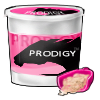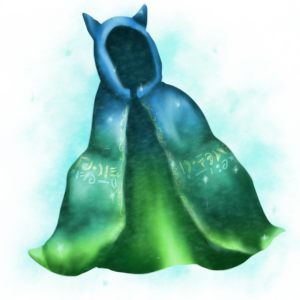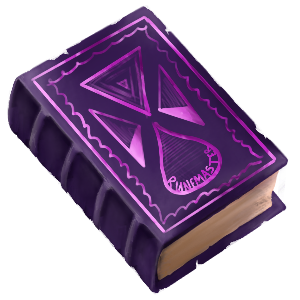|
Copyright © 2012-2020: Flying For Home & Red Zephyr Studios. All Rights Reserved. Privacy Statement | Staff & Credits | Terms Of Service Use of this site signifies your understanding of and agreement to the Terms of Service. |
First Strides
Horse Care
Stats & Traits
Racing
Series Races
Color Shows
Breeding
Breeding Basics
Intro to Matching
Standing a Stud
Pregnancy
Foal Potential
Producer Quality
➤Blood Type
Genetic Anomalies
Foal Slots
AI Straws
SIP
Grades
Horse Trader Perks
Breeding Awards
Breeding Icons
Genetics
Change Log
Item Database
Horse Care
Stats & Traits
Racing
Series Races
Color Shows
Breeding
Breeding Basics
Intro to Matching
Standing a Stud
Pregnancy
Foal Potential
Producer Quality
➤Blood Type
Genetic Anomalies
Foal Slots
AI Straws
SIP
Grades
Horse Trader Perks
Breeding Awards
Breeding Icons
Genetics
Change Log
Item Database
Blood Type
| What are Blood Types? | ||||||||||||
|---|---|---|---|---|---|---|---|---|---|---|---|---|
| Blood Types | ||||||||||||
| Blood Type (BT) is a hereditary trait that has a role in a foal’s potential and in some cases can also be a cause of negative anomalies. Every horse on FFH has one of five main Blood Types – referred to as I, II, III, IV or V. A horse can be any of these five types, but it will always inherit the Blood Type of either its sire or dam. For example, a foal with a type I sire and a type IV dam can only be either type I or type IV. | ||||||||||||
| Cloaked & Locked | ||||||||||||
|
Although all horses have a BT, there are some cases where that BT may be semi-permanently hidden. This happens when a Mistweaver's Cloak is used on a horse. The horse the item is used on is referred to as Cloaked, and its BT can never be revealed without using a Goldmancer’s Lexicon after it’s pensioned. Cloaking provides other benefits to the horse such as: improved Producer Quality, improved Heritage, improved Peak, and improved Prime. A Cloaked horse also has reduced risk with "bad" BT crosses. More on that is discussed farther down the page! In addition to having its own BT hidden, a Cloaked horse produces foals whose BTs are also hidden. Offspring of a Cloaked horse are referred to as Locked and will show a lock symbol instead of a BT on their genetics page. You cannot purchase a blood type or range for these horses, but they can occasionally have their BT verified. Locked horses have none of the benefits of a Cloaked horse and are simply treated as unknown type. If you don't wish to breed a horse as Locked, you can either Cloak them or use a Runemaster's Tome to select a BT for them. |
||||||||||||
| Secondary Blood Type | ||||||||||||
| In addition to a horse’s main Blood Type, there is a secondary factor referred to as Secondary Blood Type (SBT). Secondary Blood Type is completely hidden and can never be revealed. Secondary Blood Type works in a similar fashion to main Blood Type in that the crossing of a sire and dam’s SBT will have an impact on the resulting foal’s stats. However, the impacts of SBT are minor and only impact potential (stats) by maybe a grade at most. | ||||||||||||
| Blood Type Mutations | ||||||||||||
| All horses have a rare chance to receive one of two genetic mutations at birth. The first of these mutations will cause the horse to almost always act as if it has the worst possible bloodline match when bred. Even in a perfect cross, it will still be treated as if it is a I x V cross. In other words, it has a mutation that makes a horse's Blood Type unmatchable, resulting in significantly worse foals overall. This is often referred to as a bad mutation (-). The second mutation is a good mutation (+) that will cause a horse’s bloodline to almost always roll as if it’s an exact match to any horse it is bred with. In this case, you could breed type I x V and it would still be treated as if it's a perfect match. Horses with this mutation will throw better foals than the average horse, as every cross is essentially a perfect match. That said, a horse with a good mutation can still throw bad foals if there are other negative factors involved in the cross. If both parents have the same mutation, the chances of negative/positive results are amplified. If both parents have a bad mutation, there's almost no chance the foal will escape the impacts of it. If both parents have a good mutation, it will almost certainly receive bonuses to stats. On the flip side, if both parents have different mutations, the effect of both is nullified. You can test for mutations via the genetics page if a horse is pensioned or has at least 10 foals on the ground. The price varies based on sex. However, there is no way to prevent them from happening or guarantee they happen. There is no way to fix them. Horses who have a mutation are not more likely to pass on the mutation. Horse Trader horses, created Goldbloods, Imports, and Select Sale horses are all exempt from mutations, but their offspring are not. |
||||||||||||
| Determining Blood Type | ||||||||||||
| Blood Tests and Blood Ranges | ||||||||||||
| The easiest way to determine a horse’s Blood Type is to use a Blood Test. This can be done at the Geneticist for FFH cash. It can also be tested by using the Blood Test item, which is available in the Pro Shop for PC. You can also buy a horse's Blood Type via their Genetic page – using the 'Buy' under the Blood Type heading. It is always recommended you buy some form of Blood Test for stallions unless he is Cloaked or Tomed. You can also determine a horse's approximate type by buying a Blood Range test at the Geneticist for FFH cash or PC. This will tell you what range your horse falls into: I-III, II-IV, or III-V. If a horse has a BT that could be in multiple ranges, which range is displayed is random. For example, a Type II horse could display I-III or II-IV. While this is not an exact science and does not allow you to make perfect matches, it is much more affordable than a Blood Test. Blood Ranges are excellent choices for mares when you don't want to purchase a full blood test. Having at least a blood range tested on a mare ensures you can breed the best possible foals. |
||||||||||||
| Verifying Blood Type | ||||||||||||
| There are two cases where it is possible to verify blood type without having to test the individual horse. You can do this through parentage or through foals. You can verify the exact blood type of a foal if both their sire and their dam have the same tested blood type. Example: Charlie Thoroughbred's sire is tested type I and his dam is tested type I. He will have a verify button on his page and will be type I. A horse may be verified through their offspring if they produce a tested foal who is a different type from their other tested parent. Example, Foal 1 has a sire tested II, and an unknown dam. Foal 1 ends up being tested and is Type III. His unknown dam is then able to be verified as Type III, since the foal had to inherit the III from her. This also works on Locked horses. If they produce a foal that is different type than a tested parent, a verify button will show up on their page and they will no longer be Locked. It does not work on Cloaked horses since you cannot test their offspring, but it can help you to figure out cloaked bloodtypes if the Locked that is verified ends up different from their tested parent. You can verify types on other people's horses so it's always worth going back in pedigrees to see if you can verify any horse, because it can cause a chain reaction that allows entire lines to be tested, therefore saving a lot of money! |
||||||||||||
| Deduction Via Pedigree Analysis | ||||||||||||
| This is the most affordable way to determine Blood Type, but it should be done with care, as you will be relying on your own understanding of Blood Type. If neither parent is Cloaked, you can determine your horse's type based upon the parents. For example, if a horse's dam is type II-IV and the horse's sire is type IV, you know your horse is II-IV. Since both parents technically fall within the II-IV category, you can safely list your horse as II-IV. On the other hand, if a mare's dam is I-III and her sire is III-V, she could be either I-III or III-V. In this case there is no way to narrow her Blood Type down any further, so she would be labeled I-V or unknown. If either of a horse's parents have no type or range available, or if a horse is Locked, they are considered to have an unknown Blood Type. They should be labeled accordingly, even if you suspect they fall into a certain category based on their pedigree or how they produce. It's fine to make notes on their page to indicate your suspicions, but you should indicate it is only a suspicion. Take care not to mislabel unproven Blood Type in mini notes or when sending breeding requests. | ||||||||||||
| Matching Blood Type | ||||||||||||
| Breeding Impacts | ||||||||||||
|
When you breed two horses together, their Blood Type is compared and can either have a positive, negative, or perhaps little to no influence over the foal. BT primarily influences the stats of a horse, raising or lowering them from what was predetermined by stat genes (and other factors). It can also, in the worst crosses (I x V), result in negative anomalies as well.
A 'perfect' cross is one in which both parents share the same Blood Type (such as I x I). When perfect crosses occur, the foal may receive a substantial bonus to their base stats. Blood Types that are only 1 apart (such as IxII or IIIxIV) also have a positive, though less substantial, influence on the foal's stats. Any match that falls within this category is considered a great cross! Crosses that are 2 apart (such as IIxIV or IIIxV) often have no noticeable influence on the foal. There is no need to completely avoid 2-off crosses, but it is best to aim for exact or 1-off crosses when possible. In some cases, you'll have an overall better foal with a 2-off cross that can fix other problems a mare has. When the types of the parents are 3-4 apart, negative impacts may result. The only BT crosses that fall into this 'bad' cross category are I x IV, II x V, and I x V. Negative impacts of poor BT crosses mostly impact stats, as noted above, reducing the maximum potential of the foal. However, in 4 apart crosses (I x V), the foal may also suffer negative anomalies. This can cause any gene, at random, to end up much lower than it should have been. For more on genetic anomalies, visit the Genetic Anomalies page. Tip: If a mare has an unknown type, it is safest to breed her to Cloaked or III stallions. Doing so ensures that the match can be no farther than 2-off, which means no negative results will occur. | ||||||||||||
| Breeding Cloaked | ||||||||||||
|
Cloaking a horse minimizes the risks of 'bad' BT crosses. This means that in cases where a foal would normally have lower stats from a BT cross, their stats will not be penalized as severely. If a mare is known to be I or V, it is still in her best interest to breed her to stallions who are a closer BT cross. Cloaked horses also have no risk of negative anomalies with IxV crosses. Their foals may still inherit anomalies for other reasons. Locked horses do not have either of these benefits. Locked bred to a bad BT cross will have drastic penalties on the foal's stats and high risk of negative genetic anomalies. It is best to avoid crossing Locked with I or V, and even II or IV, unless you have reason to believe (via their non-cloaked parent) they lean toward one end or the other. Cloaked and III studs are the safest options for matching Locked mares. | ||||||||||||
| ||||||||||||



